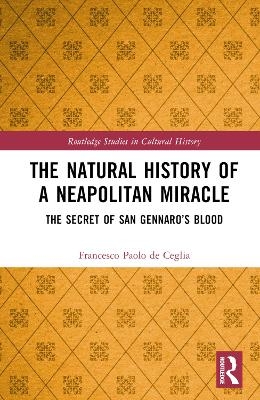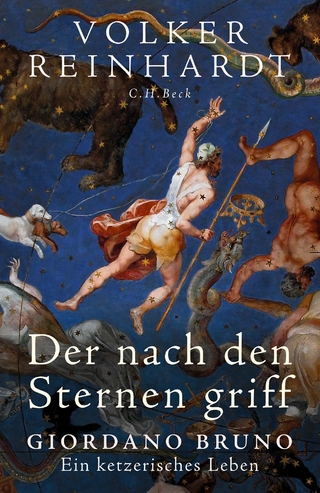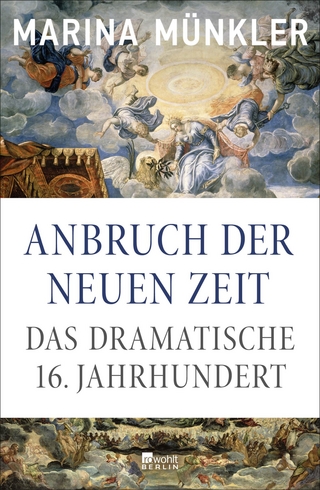
The Natural History of a Neapolitan Miracle
The Secret of San Gennaro’s Blood
Seiten
2024
Routledge (Verlag)
978-1-032-44260-0 (ISBN)
Routledge (Verlag)
978-1-032-44260-0 (ISBN)
- Lieferbar (Termin unbekannt)
- Versandkostenfrei innerhalb Deutschlands
- Auch auf Rechnung
- Verfügbarkeit in der Filiale vor Ort prüfen
- Artikel merken
This book examines the Naples’ patron saint, Gennaro, the history of his blood relic and the mystery of its periodical liquefaction.
This book examines Naples’s patron saint, Gennaro, the history of his blood relic, and the mystery of its periodical liquefaction.
Three times a year, Neapolitans gather to witness the recurring phenomenon of the liquefaction of San Gennaro’s blood. From the seventeenth century to the present, crowds have prayed to the city’s patron for protection from fires, earthquakes, plagues, droughts, and the fury of Mt. Vesuvius. In the “miraculous” moment of transposition from solid to liquid, the faithful seek respite from the ills of the world in the saintly blood, a visual reminder of the blood of Christ spilled for their salvation. In Naples, the periodical liquefaction of San Gennaro’s blood is not officially recognized as miraculous by the Catholic Church, which now more cautiously refers to it as a prodigy. Nevertheless, for centuries, this phenomenon has been called “a miracle” in liturgical texts approved by the ecclesiastical authority and in the words of bishops, cardinals, popes, and saints. However, not everyone agreed. This volume follows the efforts of theologians, alchemists, charlatans, and scientists who, through the centuries, have tried to answer questions such as: Is the liquefaction of San Gennaro’s blood really a miracle? If not, how is it possible to explain a phenomenon that occurs only on dates liturgically relevant to the saint?
The Natural History of a Neapolitan Miracle will be of great value to those interested in Religious Studies, Italian Studies, Medieval and Early Modern Studies, as well as the History of Science, Anthropology, and Ethnography.
This book examines Naples’s patron saint, Gennaro, the history of his blood relic, and the mystery of its periodical liquefaction.
Three times a year, Neapolitans gather to witness the recurring phenomenon of the liquefaction of San Gennaro’s blood. From the seventeenth century to the present, crowds have prayed to the city’s patron for protection from fires, earthquakes, plagues, droughts, and the fury of Mt. Vesuvius. In the “miraculous” moment of transposition from solid to liquid, the faithful seek respite from the ills of the world in the saintly blood, a visual reminder of the blood of Christ spilled for their salvation. In Naples, the periodical liquefaction of San Gennaro’s blood is not officially recognized as miraculous by the Catholic Church, which now more cautiously refers to it as a prodigy. Nevertheless, for centuries, this phenomenon has been called “a miracle” in liturgical texts approved by the ecclesiastical authority and in the words of bishops, cardinals, popes, and saints. However, not everyone agreed. This volume follows the efforts of theologians, alchemists, charlatans, and scientists who, through the centuries, have tried to answer questions such as: Is the liquefaction of San Gennaro’s blood really a miracle? If not, how is it possible to explain a phenomenon that occurs only on dates liturgically relevant to the saint?
The Natural History of a Neapolitan Miracle will be of great value to those interested in Religious Studies, Italian Studies, Medieval and Early Modern Studies, as well as the History of Science, Anthropology, and Ethnography.
Francesco Paolo de Ceglia is a full professor of History of Science at the University of Bari (Italy) and the co-editor of Physis. International Journal for the History of Science. His research centers around history of science, corporeality and religion, and science, image, and communication. Recent publications include Vampyr. Storia naturale della resurrezione (2023).
1. Living Blood
2. How to Construct a Miracle
3. San Gennaro: Assassin or Evil Spirit?
4. Discipline and Punish
5. The Invention of Time
6. Neapolitan Caprice
7. It’s Not Blood
8. The Ghosts Are Back
| Erscheinungsdatum | 18.10.2024 |
|---|---|
| Reihe/Serie | Routledge Studies in Cultural History |
| Zusatzinfo | 27 Halftones, black and white; 27 Illustrations, black and white |
| Verlagsort | London |
| Sprache | englisch |
| Maße | 152 x 229 mm |
| Gewicht | 970 g |
| Themenwelt | Geschichte ► Allgemeine Geschichte ► Neuzeit (bis 1918) |
| Geisteswissenschaften ► Geschichte ► Regional- / Ländergeschichte | |
| Geschichte ► Teilgebiete der Geschichte ► Kulturgeschichte | |
| Geschichte ► Teilgebiete der Geschichte ► Religionsgeschichte | |
| Religion / Theologie ► Christentum ► Kirchengeschichte | |
| ISBN-10 | 1-032-44260-3 / 1032442603 |
| ISBN-13 | 978-1-032-44260-0 / 9781032442600 |
| Zustand | Neuware |
| Informationen gemäß Produktsicherheitsverordnung (GPSR) | |
| Haben Sie eine Frage zum Produkt? |
Mehr entdecken
aus dem Bereich
aus dem Bereich
Giordano Bruno - ein ketzerisches Leben
Buch | Hardcover (2024)
C.H.Beck (Verlag)
29,90 €
das dramatische 16. Jahrhundert
Buch | Hardcover (2024)
Rowohlt Berlin (Verlag)
34,00 €
die Fahrt der Bounty und die globale Wirtschaft im 18. Jahrhundert
Buch | Hardcover (2024)
Klett-Cotta (Verlag)
25,00 €


